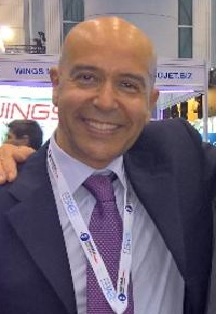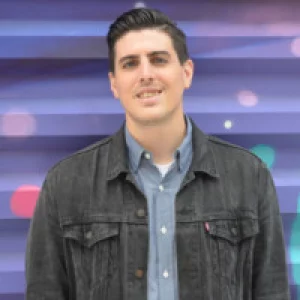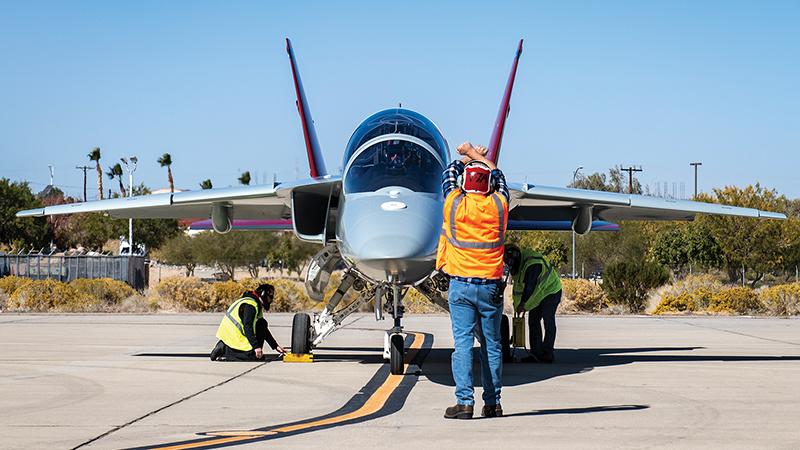See us at MRO Asia Pacific 2025
Opinion: Is The Military Jet Trainer Becoming Obsolete?
Details
More Products & Services
Products & Services
Aerospace | Aviation Week Network
Aviation Week Network
https://aviationweek.com/themes/custom/particle/dist/app-drupal/assets/awn-logo.svg
Home - Aviation Group Marketing
Aviation Week Network
120 data points on over 156,000 commercial and business aviation aircraft, including military transports. Discover the most trustworthy resource for the complete aircraft history, plus ad hoc reports, month-over-month trend analysis and details on expected deliveries through 2050.
People

Andrea Rossi Prudente
Aviation Week Network

Anthony Lim
Aviation Week Network
Sales director

Becca Balmes
Aviation Week Network

Belinda Tan
Aviation Week Network

Brian Everstine
Aviation Week Network
Editor

Eddie Krankowski
Aviation Week Network
Assistant Manager, Tradeshows

erving dockery
Aviation Week Network

Lisa Tan
Aviation Week Network
Senior Marketing Manager

Mark Thomas
Aviation Week Network
Description
Boeing's T-7A Red Hawk advanced jet trainer has had a turbulent development process, and it could face a choppy future, too.
After winning the U.S. Air Force's $9.2 billion T-X competition in 2018 to replace the venerable Northrop T-38C Talon, Boeing almost immediately began taking charges against the fixed-price contract. The most recent, a $500 million hit, came in the fourth quarter of 2024. T-7A charges now total $2.7 billion, reflecting higher anticipated development and production costs.
On top of that, the U.S. Air Force said on Jan. 15 that it is delaying T-7A production by a year, to 2026, and buying four “production-representative aircraft” in fiscal 2025 for additional testing. That has focused attention not only on the aircraft's development but also on its prospects in international markets when it finally enters service in the U.S.
The baseline T-7A contract is for 381 aircraft, with options for up to 475 more. Boeing and its principal subcontractor, Saab, have talked about an addressable export market for up to 2,000 aircraft, more than enough to make up the financial ground lost so far.
At first glance, that market size looks credible: Several legacy advanced jet trainers have been very high-volume programs. BAE Systems has sold more than 1,000 Hawk trainers since production started in the mid-1970s. Competitor Dassault/Dornier sold 480 Alpha Jets, and about 1,200 T-38s were built, including around 150 for non-U.S. customers.
But the nature of the military pilot-training market is changing, driven by the exceptionally high cost of the process. The U.S. Air Force estimates that it spends more than $10 million for a single front-line pilot, in part because flight-hour costs are $3-5,000 on trainer aircraft and $15-50,000 for operational fighters.
The biggest area where the market has evolved since the heyday of the T-38 and BAE Hawk is in simulation and ground-based training. All military training programs today are based on a complete system, not just aircraft. Using computer-based and procedures trainers, as well as a range of more complex simulators, means that each hour of real flying for a trainee is purely to confirm and reinforce what was taught on the ground.
Fleets of jet trainers have shrunk as a result. The UK Royal Air Force ordered 175 Hawks in the 1970s; it operates only 28 of the latest Hawk T2 aircraft now. The situation in the Italian Air Force is similar: Only 27 of the modern Leonardo M-346 aircraft are in the training role compared with more than 100 of the predecessor MB-339s.
Another challenge for new advanced jet trainers is competition from a new generation of fast, advanced turboprops that cost far less. Aircraft such as the Pilatus PC-21 and, to an extent, Embraer's EMB 314 Super Tucano, can address a far greater proportion of the fighter pilot training syllabus than previous turboprops. This reduces the requirement for a faster jet considerably, limiting it to transonic flight and the highest-altitude training, perhaps the last 10% or so of an air force training program.
Even this is no longer a given, however. France, arguably Europe's most advanced air force, has adopted a complete training system called the Mentor program that is being delivered by British company Babcock International. It trains pilots right up to conversion onto the Dassault Rafale; training occurs entirely in Pilatus PC-7 and PC-21 turboprops. The old Alpha Jets were retired without direct jet replacement.
Some training requirements clearly might, on balance, still favor advanced jets. The U.S. Air Force training system will, in parallel with training U.S. pilots, convert a high proportion of non-U.S. pilots to the Lockheed Martin F-35. It might make sense at some stage for European states that operate different collaborative training systems across the continent to establish an on-continent F-35 pilot conversion program.
Advanced jet trainers also could factor in niche applications, including maintaining pilot currency at lower cost than, for instance, using an F-35, or aggressor-type roles. But that does not translate into a 2,000-aircraft export program.
In all probability, the T-7A will be a perfectly reasonable if slightly expensive trainer, ultimately, and a fair number of governments, even in Europe, will buy some—or its competitors from Italy or South Korea. But synthetic training has become so sophisticated that the need for a high-end transonic jet is only a fraction of the syllabus that it once was. The basic question every military will ask itself is: Why fly an expensive jet when you can obtain identical training value for less than half the hourly cost with a PC-21?
After winning the U.S. Air Force's $9.2 billion T-X competition in 2018 to replace the venerable Northrop T-38C Talon, Boeing almost immediately began taking charges against the fixed-price contract. The most recent, a $500 million hit, came in the fourth quarter of 2024. T-7A charges now total $2.7 billion, reflecting higher anticipated development and production costs.
On top of that, the U.S. Air Force said on Jan. 15 that it is delaying T-7A production by a year, to 2026, and buying four “production-representative aircraft” in fiscal 2025 for additional testing. That has focused attention not only on the aircraft's development but also on its prospects in international markets when it finally enters service in the U.S.
The baseline T-7A contract is for 381 aircraft, with options for up to 475 more. Boeing and its principal subcontractor, Saab, have talked about an addressable export market for up to 2,000 aircraft, more than enough to make up the financial ground lost so far.
At first glance, that market size looks credible: Several legacy advanced jet trainers have been very high-volume programs. BAE Systems has sold more than 1,000 Hawk trainers since production started in the mid-1970s. Competitor Dassault/Dornier sold 480 Alpha Jets, and about 1,200 T-38s were built, including around 150 for non-U.S. customers.
But the nature of the military pilot-training market is changing, driven by the exceptionally high cost of the process. The U.S. Air Force estimates that it spends more than $10 million for a single front-line pilot, in part because flight-hour costs are $3-5,000 on trainer aircraft and $15-50,000 for operational fighters.
The biggest area where the market has evolved since the heyday of the T-38 and BAE Hawk is in simulation and ground-based training. All military training programs today are based on a complete system, not just aircraft. Using computer-based and procedures trainers, as well as a range of more complex simulators, means that each hour of real flying for a trainee is purely to confirm and reinforce what was taught on the ground.
Fleets of jet trainers have shrunk as a result. The UK Royal Air Force ordered 175 Hawks in the 1970s; it operates only 28 of the latest Hawk T2 aircraft now. The situation in the Italian Air Force is similar: Only 27 of the modern Leonardo M-346 aircraft are in the training role compared with more than 100 of the predecessor MB-339s.
Another challenge for new advanced jet trainers is competition from a new generation of fast, advanced turboprops that cost far less. Aircraft such as the Pilatus PC-21 and, to an extent, Embraer's EMB 314 Super Tucano, can address a far greater proportion of the fighter pilot training syllabus than previous turboprops. This reduces the requirement for a faster jet considerably, limiting it to transonic flight and the highest-altitude training, perhaps the last 10% or so of an air force training program.
Even this is no longer a given, however. France, arguably Europe's most advanced air force, has adopted a complete training system called the Mentor program that is being delivered by British company Babcock International. It trains pilots right up to conversion onto the Dassault Rafale; training occurs entirely in Pilatus PC-7 and PC-21 turboprops. The old Alpha Jets were retired without direct jet replacement.
Some training requirements clearly might, on balance, still favor advanced jets. The U.S. Air Force training system will, in parallel with training U.S. pilots, convert a high proportion of non-U.S. pilots to the Lockheed Martin F-35. It might make sense at some stage for European states that operate different collaborative training systems across the continent to establish an on-continent F-35 pilot conversion program.
Advanced jet trainers also could factor in niche applications, including maintaining pilot currency at lower cost than, for instance, using an F-35, or aggressor-type roles. But that does not translate into a 2,000-aircraft export program.
In all probability, the T-7A will be a perfectly reasonable if slightly expensive trainer, ultimately, and a fair number of governments, even in Europe, will buy some—or its competitors from Italy or South Korea. But synthetic training has become so sophisticated that the need for a high-end transonic jet is only a fraction of the syllabus that it once was. The basic question every military will ask itself is: Why fly an expensive jet when you can obtain identical training value for less than half the hourly cost with a PC-21?

Share
Recent Chats
Share via email
Future: handle WhatsApp here
Future: handle LinkedIn here
Future: handle Twitter here
SUBMENU HERE
Share via Chat
Copy Link

